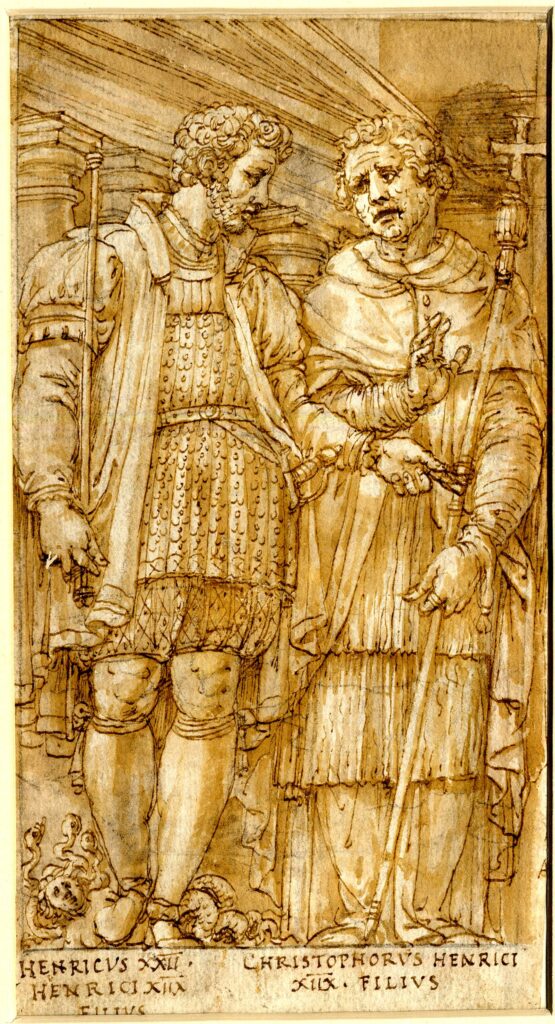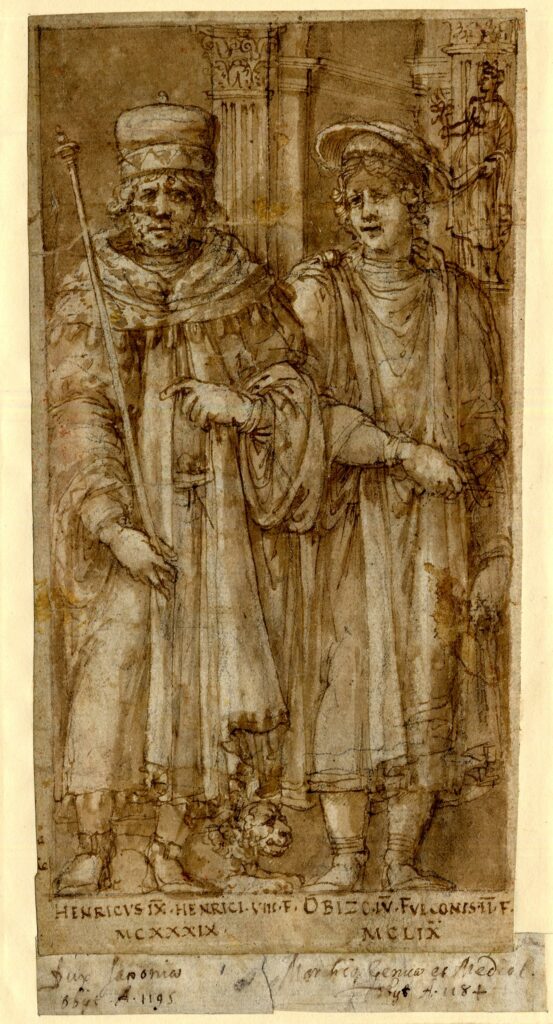The most important families that dominated the Italian territory were obliged to constantly demonstrate their power and splendour in order to prove their solidity of rule. This was especially true for the rulers of smaller territories that were often the goal of stronger states. The most influential families commissioned works of art and manuscripts, built churches and monasteries, donated magnificent jewellery, wore the most precious fabrics and, above all, wanted to prove the importance of their name and the greatness of their ancestors by even tracing them back to mythological figures.
The cycle of frescoes commissioned by Alfonso II in the second half of the 16th century fits into this context. The courtyard of the castle was decorated with ‘Portraits of the Este Princes’, full-length figures larger than life-size and painted in pairs, set within an architectural frame concluded at the bottom with an inscription of their names. For the representation of his illustrious genealogy Alfonso employed Pirro Ligorio, court antiquarian, who was entrusted with the historical research on his ancestors and the creation of a suitable iconography. The study on the Este genealogy published a few years earlier (1570) by the ducal historian Giovan Battista Pigna entitled ‘Historia dei Principi di Este’ was used in this difficult task. Pigna traced the Este lineage back to Caius Azio, a magistrate of the Western Roman Empire employed in the Veneto region and later acclaimed Lord of Este. The miniated codex illustrates, by name and portrait, the branches of the lineage from the fall of the Roman Empire to 1476.
Only three frescoes have come down to us and they represent Folco III and Bonifacio IV d’Este, Enrico IX and Obizzo IV and one whose subjects cannot be identified, while there are thirty-three surviving preparatory drawings by Pirro Ligorio, most of which are preserved in the Ashmolean Museum in Oxford.
It is interesting to compare the portraits of Folco III (on the left) and his brother Boniface IV (on the right), of whom we have both the preparatory drawing and the fresco, which we recognise thanks to the inscription on the drawing bearing their names “FVLCO III. FVLCONIS II. F. / BONIFATIVS. IV / FVLCONIS. F.” The two brothers were the first to appear with the name ‘Marchiones de Este’ in a document dated between 1171 and 1173. Here they are depicted standing, wearing clothes draped in the antique style, and Folco wears a cap in mediaeval style. A comparison with the drawing shows that both were holding a sceptre, a symbol of power, while the background was decorated with columns with Doric capitals and on the right was a female figure holding a branch, probably an olive or laurel branch symbolising peace or noble dignity.
The frescoes were removed from the walls of the courtyard of the Castle of Ferrara in 1969 and transported to the Pinacoteca Nazionale, where they remained until the early 1990s; they are now in the Museo del Castello Estense.











